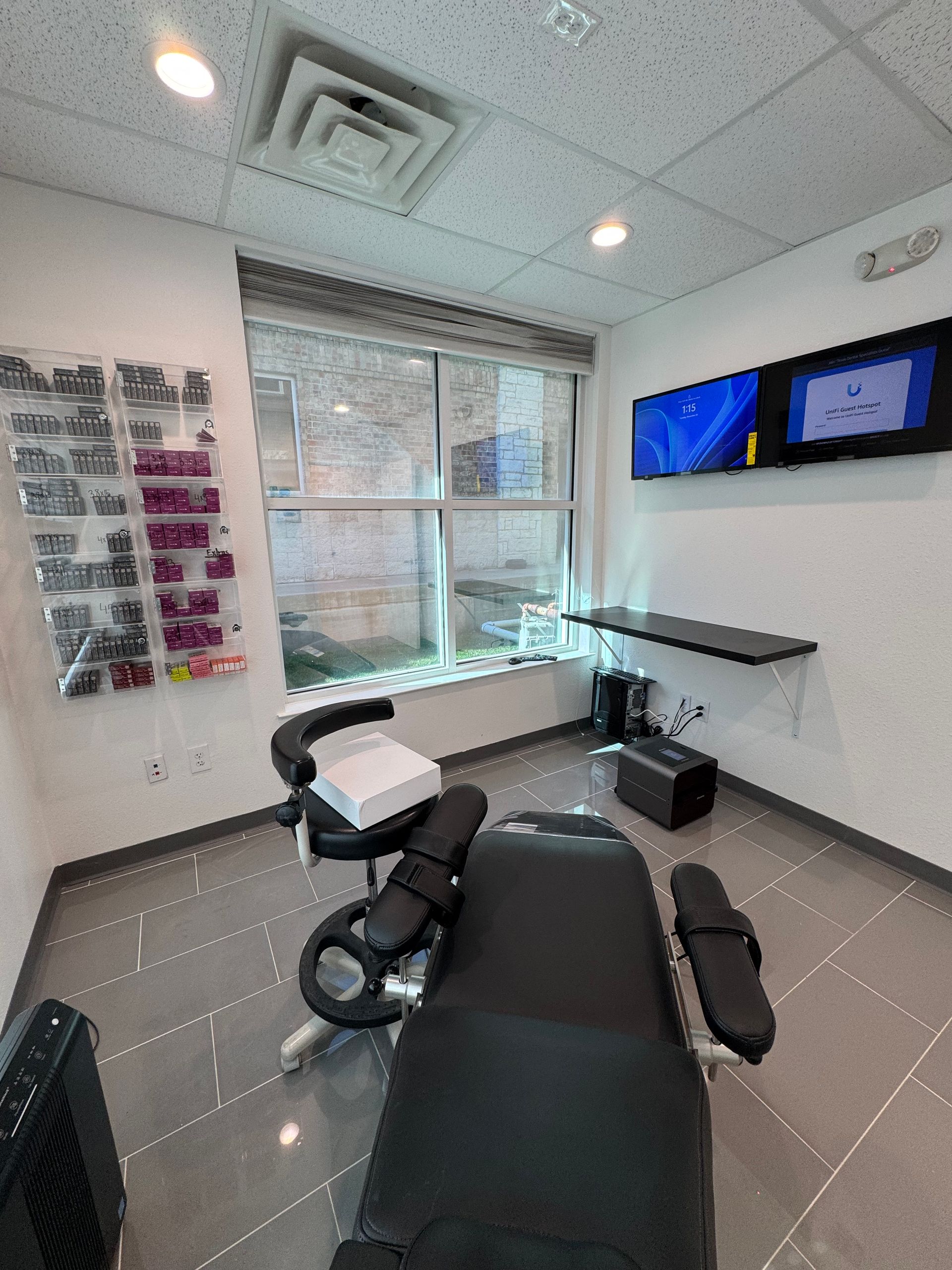Experience Calm & Comfort With Sedation Dentistry in Plano, TX
If the thought of visiting the dentist fills you with anxiety, you're not alone. At Texas Dental Specialists in Plano, TX, we offer
sedation dentistry to help you feel calm and in control—no matter the procedure. Whether you’ve delayed care due to fear or simply want a more comfortable experience, sedation dentistry may be the solution.
For more information about our services or to schedule an appointment, call us at (214) 619-6329 or complete the form below we’ll get back to you as soon as we can.
Indications for Sedation
Sedation is generally indicated for patients with fear or anxiety regarding going to a dentist for a dental procedure. These include patients with:
- Low pain threshold
- Difficulty sitting still in the dentist’s chair
- Sensitive teeth
- The requirement of a major amount of dental work
What Is Sedation Dentistry & How Does It Work?
Sedation dentistry uses safe, medically-approved techniques to help patients relax during dental procedures. It's ideal for people with dental phobia, sensitive teeth, a strong gag reflex, or a need for multiple treatments in one visit.
We offer multiple types of sedation:
- Oral Conscious Sedation – A pill taken before the appointment for a deeply relaxed but responsive state.
- Nitrous Oxide (Laughing Gas) – A mild sedative inhaled through a mask, which wears off quickly.
- IV Sedation – Administered directly into the bloodstream for deeper sedation, often used for more complex procedures.
All methods are supervised by experienced professionals to ensure safety and comfort.
Who Can Benefit from Sedation Dentistry?
You may be a good candidate for sedation if:
- You have dental anxiety or fear of the dentist
- You need extensive dental work or oral surgery
- You have a low pain threshold or sensitive gag reflex
- You struggle to sit still for long periods
- You’ve had traumatic past dental experiences
Sedation can help patients of all ages, including children and seniors, feel more at ease during care.
Our Sedation Options at Texas Dental Specialists
At our Plano dental clinic, we customize sedation based on your needs and health history. Options include:
- Minimal Sedation with nitrous oxide
- Moderate Sedation with oral medications
- Deep Sedation through IV for complex cases
We’ll walk you through your options and help you choose the safest, most effective method.
Why Plano Patients Trust Dr. Omar Yousuf for Comfortable Dental Care
Dr. Omar Yousuf and our experienced dental team specialize in creating a stress-free environment for every patient. We’re known throughout Plano for our gentle care, advanced sedation techniques, and commitment to patient comfort.
We are a trusted Plano dentist offering certified sedation services for nervous patients, children, and adults alike. Read our reviews and see why our patients return with confidence and peace of mind.
Request an Appointment
For more information about our services or to schedule an appointment, call us at (214) 619-6329 or complete the form below we’ll get back to you as soon as we can.
Frequently Asked Questions
About Sedation Dentistry
Is it OK to get sedated at the dentist?
Yes, dental sedation is a safe and commonly used method to help patients feel relaxed during procedures. When administered by trained professionals, sedation dentistry is very effective for managing anxiety, discomfort, or complex dental work. At Texas Dental Specialists in Plano, we carefully review your medical history and tailor the sedation method to your needs.
How much does it cost to have a tooth pulled under sedation?
The cost of tooth extraction with sedation can vary depending on the type of sedation used. On average:
- Simple extraction with nitrous oxide: $200–$500
- Oral sedation: add $200–$300
- IV sedation: can add $500 or more
Keep in mind that insurance may cover part of the cost. We provide upfront pricing and pre-treatment estimates.
Can you request to be put to sleep for a dentist?
Yes, you can request dental sedation. If you’re particularly anxious or need a longer procedure, options like oral sedation or IV sedation can help you stay calm—or even sleep lightly—throughout the treatment. We’ll help you choose the right level of sedation for your situation.
Is sedation dentistry covered by insurance?
Coverage depends on your specific insurance plan and why sedation is needed. Some plans may cover sedation if it's considered medically necessary, such as for surgery or severe dental anxiety. We’ll help you verify your benefits and submit any required documentation.
What is the safest dental sedation?
For most patients, nitrous oxide (laughing gas) is considered the safest form of dental sedation. It takes effect quickly, wears off fast, and is mild enough for use in both children and adults. However, all types of sedation used at our Plano clinic are FDA-approved and administered by trained professionals under careful monitoring.
Our reviews





